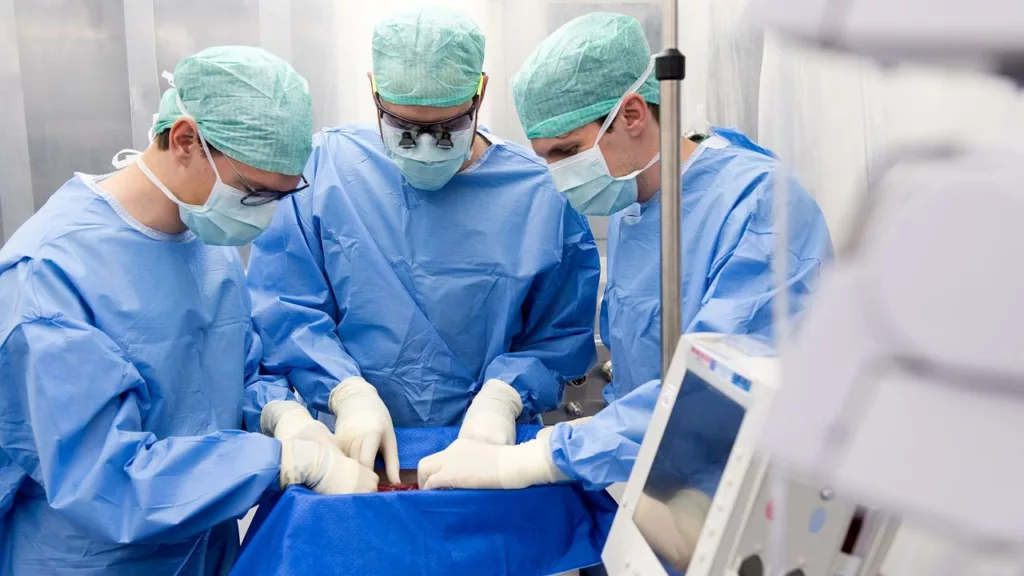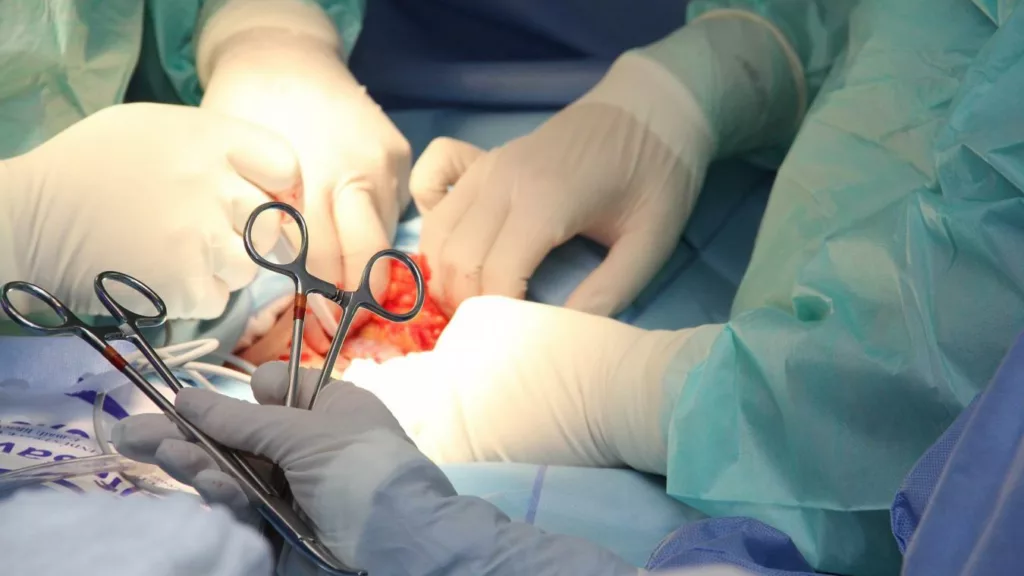A heart transplant is an operation to replace a failing heart with a healthier donor heart. Heart transplantation is a treatment generally reserved for people whose condition has not improved sufficiently with medication or other surgical interventions.
It is a complex procedure, requiring the coordination of medical teams and an understanding of the processes involved, from both the doctor’s and the patient’s point of view.
Preparations for a heart transplant often begin weeks or months before receiving a donor heart. Let’s take a look at how a heart transplant unfolds from different points of view, to understand what’s at stake :

The role of doctors
His role is, of course, central, and his expertise guides every stage of the process to ensure success and the patient’s well-being. Progress in this field has led to an increase in post-transplant survival (cf. Swiss Medical Journal). From the practitioner’s point of view, heart transplantation raises a number of issues:
First of all, they must validate the patient’s eligibility for transplantation, and the patient undergoes a pre-transplant check-up to observe his or her overall health, especially cardiac health. These tests assess the functions of the heart, lungs and other body systems.
The heart transplant selection team reviews the results of the examination and tests to decide whether a transplant is suitable. Whenever possible, the health-care team will seek alternative treatments for heart failure before proceeding with transplantation.
The Agence de Biomédecine is the reference authority in this field and has established the following criteria: As a general rule, you are eligible for a heart transplant if you are under 69 years of age, have been diagnosed with end-stage heart disease, such as cardiomyopathy or coronary artery disease, and have a prognosis that suggests you are at risk of mortality within the next year if a heart transplant is not performed.
Next, doctors need to select potential donors. During their search of national lists of potential donors, the medical team ensures that a donor compatible with the transplant candidate is identified.
Three levels of compatibility come into play for the heart:
– Hemodynamic compatibility, to ensure blood circulation for the recipient
– Immunological compatibility, which enables the blood groups of the donor-recipient pair to be matched.
– Tissue compatibility, which involves comparing 6 specific antigens for each individual. In other words, this is the biological comparison of donor and recipient tissues.
In addition, the HLA (Human Leukocyte Antigen) system, which represents an individual’s genetic identity card, is one of the compatibility criteria for a transplant. This leads to immunological tests to identify any incompatibilities and minimize the risk of rejection.
Once this maximum compatibility has been verified, the doctor proceeds to harvest the donor heart. The aim is to ensure the heart’s viability once removed, particularly during transport (cf. Agence de Biomédecine).

Source : Cincinnati Children’s
Patient experience
When a patient is referred for heart transplantation, there’s a lot to do both before and after the operation. Before the operation, he must work with the transplant medical team to carry out all tests and assessments, and after the operation, he must continue to work with the transplant team to ensure that he and his new heart remain healthy.
Most heart transplants are performed using an orthotopic method. Your heart is removed and the donor heart is sewn in its place. Once the new heart is in place, the donor’s main arteries – the aorta and pulmonary arteries – are sewn to yours.
The patient must relearn to breathe with the implanted heart, and is monitored by physiotherapists. Post-operative recovery is very important in learning to live with a new heart, and takes place gradually. Nevertheless, a heart transplant requires the patient to take medication for the rest of his or her life, to avoid the risk of infection. However, a heart transplant offers the patient the chance to live a new life in better conditions.
Do engineers have a role to play in all this ?
Today, the number of donors compared with the number of patients on the waiting list reveals the acute shortage of grafts and creates an emergency situation for patients.
Medicine in the first half of the twentieth century made increasing use of technology and engineering skills. There are many examples of this crucial convergence between two specific fields: surgery and mechanical engineering. In less than 50 years (circa 1930-1980), several “scientific couples” (usually a visionary surgeon and an engineer with above-average skills) realized a long-dreamed-of “impossibility” of modern medicine, such as open-heart surgery. This contribution will focus not only on the technical details, but also on the “human factor” that characterized the protagonists of this revolution.
Cardiac surgeons and engineers are therefore natural “partners” in the design of the artificial heart, the alternative that replaces the failing natural heart with an implantable cardiac prosthesis that reproduces the motor functions of the native heart.

This is a fast-growing market, and Procope Medicals’engineers are working on a fully implantable artificial heart that will stand out from existing products in terms of size, compatibility with the widest possible range of morphologies, and total implantability thanks to an implantable battery that can be recharged inductively, thereby reducing the risk of infection. In collaboration with the cardiac surgeons at Nantes University Hospital and its Anatomy Laboratory, morphological compatibility tests enabled anatomical validation. And this year, the pre-clinical testing phase will begin with the first in-vivo implantation of the prosthesis on animals. The role of engineers is therefore a major one, opening up new prospects for both doctors and patients.
Sources :
https://www.fedecardio.org/je-m-informe/greffe-cardiaque-un-retour-a-la-vie/
https://www.dondorganes.fr/questions/64/dans-quels-cas-greffe-t-un-cœur
https://tpetransplantation.wixsite.com/cardiaque/compatibilite
https://www.dondorganes.fr/questions/67/existent-il-des-alternatives-à-la-greffe-de-cœur
